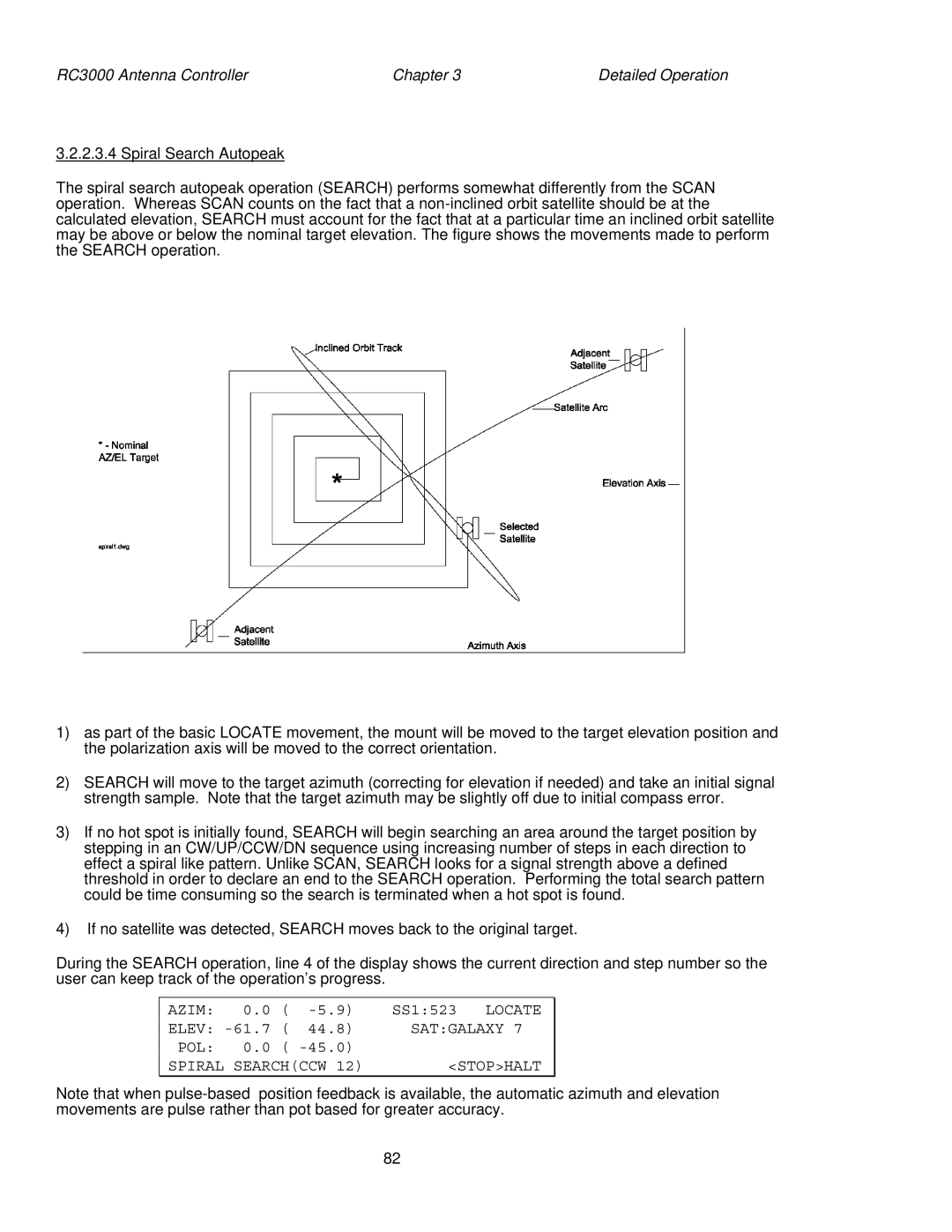
RC3000 Antenna Controller | Chapter 3 | Detailed Operation |
3.2.2.3.4 Spiral Search Autopeak
The spiral search autopeak operation (SEARCH) performs somewhat differently from the SCAN operation. Whereas SCAN counts on the fact that a
1)as part of the basic LOCATE movement, the mount will be moved to the target elevation position and the polarization axis will be moved to the correct orientation.
2)SEARCH will move to the target azimuth (correcting for elevation if needed) and take an initial signal strength sample. Note that the target azimuth may be slightly off due to initial compass error.
3)If no hot spot is initially found, SEARCH will begin searching an area around the target position by stepping in an CW/UP/CCW/DN sequence using increasing number of steps in each direction to effect a spiral like pattern. Unlike SCAN, SEARCH looks for a signal strength above a defined threshold in order to declare an end to the SEARCH operation. Performing the total search pattern could be time consuming so the search is terminated when a hot spot is found.
4)If no satellite was detected, SEARCH moves back to the original target.
During the SEARCH operation, line 4 of the display shows the current direction and step number so the user can keep track of the operation’s progress.
AZIM: | 0.0 | ( | SS1:523 LOCATE | |
ELEV: | ( | 44.8) | SAT:GALAXY 7 | |
POL: | 0.0 | ( |
| |
SPIRAL SEARCH(CCW 12) | <STOP>HALT | |||
Note that when
82
